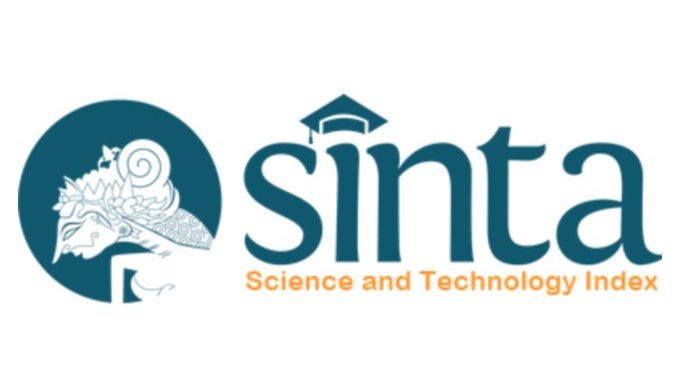Tension-type Headache and Migraine as Manifestations of Chronic Post-Traumatic Headache
DOI:
https://doi.org/10.55175/cdk.v50i2.528Keywords:
Migraine, post-traumatic headache, tension-type headacheAbstract
Introduction: A subsequent headache within seven days of a head injury (or after regaining consciousness after the head trauma)is referred to as a post-traumatic headache (PTHA); it is referred to as chronic or chronic post-traumatic headache (CPTHA) if it lasts longer than three months after the injury. Case : A 17-year-old male with headache since 3 months ago, 3 days after suffered a blow to his left head from falling from a chair. At that time, the patient fainted for about 15 minutes but had no complaints after regained consciousness. Pain is felt on the left side of the head, throbbing, mild-moderate intensity, and feels heavier with a loud sound or a too-bright light. Discussion: Post-traumatic headache is clinically diagnosed. Laboratory and routine diagnostic imaging studies are unnecessary and have minimal clinical utility. Conclusion: Chronic post-traumatic headaches often occur, especially after minimally traumatic brain injury. The clinical picture is variable and may be similar to tension-type headaches and/or migraines.
Pendahuluan: Nyeri kepala dalam tujuh hari setelah cedera kepala atau setelah sadar kembali dari trauma kepala disebut nyeri kepala pasca-trauma (post-traumatic headache/PTHA); disebut sakit kepala pasca-trauma kronis atau kronis (CPTHA) jika berlangsung lebih dari tiga bulan setelah cedera. Kasus: Seorang laki-laki berusia 17 tahun dengan keluhan nyeri kepala sejak 3 bulan, 3 hari setelah kepala kiri terbentur karena jatuh dari kursi. Saat itu, pasien pingsan sekitar 15 menit, tidak ada keluhan setelah sadar. Nyeri dirasakan di sisi kiri kepala, berdenyut, intensitas ringan-sedang, terasa lebih berat jika ada suara keras atau cahaya terlalu terang. Diskusi: Nyeri kepala pasca-trauma didiagnosis secara klinis. Laboratorium dan studi pencitraan diagnostik rutin tidak diperlukan dan memiliki utilitas klinis minimal. Simpulan: Nyeri kepala pasca-trauma kronis sering terjadi, terutama setelah cedera otak traumatis minimal. Gambaran klinisnya bervariasi dan dapat mirip nyeri kepala tipe tegang dan/atau migrain
Downloads
References
Lew HL, Lin PH, Fuh JL, Wang SJ, Clark DJ, Walker WC. Characteristics and treatment of headache after traumatic brain injury: A focused review. Am J Phys Med Rehabil. 2006;85(7):619–27.
Bogduk N, Govind J, Treleaven J, Downie A, Williams CM, Henschke N, et al. Post-traumatic headache: Epidemiology and pathophysiological insights. Lancet Neurol. 2011;8(10):211–7.4422(09)70209-1
Defrin R. Chronic post-traumatic headache: Clinical findings and possible mechanisms. J Man Manip Ther. 2014;22(1):36–43.
Lucas S, Hoffman JM, Bell KR, Dikmen S. A prospective study of prevalence and characterization of headache following mild traumatic brain injury. Cephalalgia 2014;34(2):93–102.
Defrin R, Gruener H, Schreiber S, Pick CG. Quantitative somatosensory testing of subjects with chronic post-traumatic headache: Implications on its mechanisms. Eur J Pain 2010;14(9):924–31.
Ashina H, Porreca F, Anderson T, Mohammad Amin F, Ashina M, Winther Schytz H, et al. Post-traumatic headache: Epidemiology and pathophysiological insights. Nat Rev Neurol. 2019;15(10):607–17.
Ayata C, Lauritzen M. Spreading depression, spreading depolarizations, and the cerebral vasculature. Physiol Rev. 2015;95(3):953–93.
Schwedt TJ. Structural and functional brain alterations in post-traumatic headache attributed to mild traumatic brain injury: A narrative review. Front Neurol. 2019;10:615. doi: 10.3389/fneur.2019.00615.
Fraser F, Matsuzawa Y, Lee YSC, Minen M. Behavioral treatments for post-traumatic headache. Curr Pain Headache Rep. 2017;21(5):1-9.
Larsen EL, Ashina H, Iljazi A, Al-Khazali HM, Seem K, Ashina M, et al. Acute and preventive pharmacological treatment of post-traumatic headache: A systematic review. J Headache Pain. 2019;20(1):98-107.
Petrelli T, Farrokhyar F, McGrath P, Sulowski C, Sobhi G, DeMatteo C, et al. The use of ibuprofen and acetaminophen for acute headache in the postconcussive youth: A pilot study. Paediatr Child Heal. 2017;22(1):2–6
Schwedt TJ, Chong CD, Peplinski J, Ross K, Berisha V. Persistent post-traumatic headache vs. migraine: An MRI study demonstrating differences in brain structure. J Headache Pain. 2017;18(1):87.
Kothari SF, Eggertsen PP, Frederiksen OV, Thastum MM, Svendsen SW, Tuborgh A, et al. Characterization of persistent post-traumatic headache and management strategies in adolescents and young adults following mild traumatic brain injury. Sci Rep. 2022;12(1):2209.
Schwedt TJ, Chong CD, Peplinski J, Ross K, Berisha V. Persistent post-traumatic headache vs. migraine: An MRI study demonstrating differences in brain structure. J Headache Pain. 2017;18(1):87.
The International Classification of Headache Disorders. 3rd edition (beta version) Cephalalgia. 2013;33(9):629-808.
Capi M, Pomes LM, Andolina G, Curto M, Martelletti P, Lionetto L. Persistent post-traumatic headache and migraine: Pre-clinical comparisons. Int J Environ Res Public Health 2020;17(7):2585
Downloads
Published
How to Cite
Issue
Section
License
Copyright (c) 2023 https://creativecommons.org/licenses/by-nc/4.0/

This work is licensed under a Creative Commons Attribution-NonCommercial 4.0 International License.





















